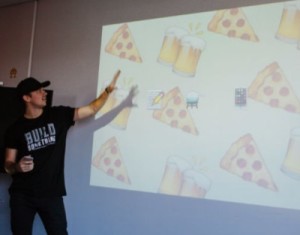 Yahoo! Developer Network Technical Evangelist Mattt Thompson put up a long post today on the YDN blog laying out his vision for the future of the web and what Web 3.0 might look like. Says Thompson, Web 3.0 will be all about the ubiquity of desktop/offline access for rich Internet applications.
Yahoo! Developer Network Technical Evangelist Mattt Thompson put up a long post today on the YDN blog laying out his vision for the future of the web and what Web 3.0 might look like. Says Thompson, Web 3.0 will be all about the ubiquity of desktop/offline access for rich Internet applications.
Thompson framed his case for Web 3.0 by defining Web 2.0 — or at least the technology that made it possible. According to Thompson, regardless of the specifics of the Web 2.0 definition that you subscribe to, most of what we think of as the current generation of the web was made possible by Ajax.
“Asynchronous communication between the browser and servers (a la Ajax) provided the latency needed to recreate the look and feel of a regular desktop application,” he writes. “Not to argue the finer points in this minefield of buzzwords and strong opinions, but the emergence of rich user interaction changed everything. It got people to rethink what a website could be. It was a newer, shinier series of tubes.”
Thompson thinks that other new technologies could have a similarly substantial impact on the web and “make Web 2.0 no more than a distant memory.”
His leading candidates right now are Gears — the open source offline sync API from Google — and Yahoo! BrowserPlus, a similar offline API for web developers that takes a different, more modular approach than Google’s Gears.
Thompson says that even though many bloggers and developers have described Gears and BrowserPlus as competitors, they’re not necessarily so. “With their respective design goals in mind, it doesn’t make sense to look at Gears and BrowserPlus as competitors. Sure, both have an intersecting feature set, including desktop integration, and automatic software updates, but that’s where the similarities end,” he says.
Gears is a back end technology, says Thompson, while BrowserPlus has potential to be used for front end tasks. Together, they reveal his vision for Web 3.0: an Internet in which applications move seamlessly from between online and offline environments, from the web to the desktop, and where that is as expected as all the Ajaxy-bits are today.
“If you think back to how Ajax changed the way people could interact with websites, much of it is completely transparent. For instance, deleting items in a list with real-time feedback is so pervasive that it became an expected behavior,” writes Thompson, who says that he can envision a web where the type of things enabled by Gears and BrowserPlus become “equally pervasive, yet [remain] invisible to the normal user.”
If RIAs are the future of the web — or even the future of computing — then offline/desktop access is supremely important. The browser is not a very good operating system, so being able to run applications on the desktop is an important transitional step toward Thompson’s vision of Web 3.0 and the future of thin client computing.
 Josh Catone
Josh CatoneBefore joining Jilt, Josh Catone was the Executive Director of Editorial Projects at Mashable, the Lead Writer at ReadWriteWeb, Lead Blogger at SitePoint, and the Community Evangelist at DandyID. On the side, Josh enjoys managing his blog The Fluffington Post.



